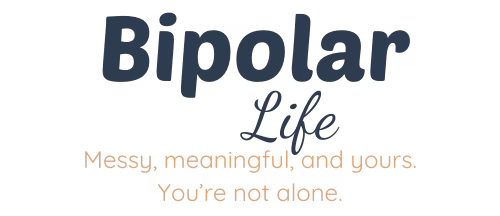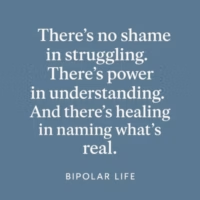Living with Bipolar Disorder: A Life Beyond the Highs and Lows
Living with bipolar disorder is often described as a rollercoaster—sharp climbs, thrilling highs, sudden plunges into shadow, and, like a rollercoaster, stretches of flat, steady plateaus. But that metaphor doesn’t quite capture the whole picture. Yes, the highs and lows are real. But unlike a rollercoaster, you don’t always know what’s ahead. They shape your days, your decisions, your sense of self. But there’s more to life with bipolar disorder than mood swings. There’s also resilience, self-awareness, strength, fierce love, and the quiet victories that often go unseen.
What It’s Really Like
Bipolar disorder isn’t a one-size-fits-all experience. It shows up differently for different people. Some live with Bipolar I, marked by full manic episodes that may feel exhilarating, terrifying—or both. Others navigate Bipolar II, where hypomania may pass unnoticed but depression can feel like it takes up residence in your bones. And even within each type, every person will have their own bipolar cycles and experiences—no two journeys look exactly the same.
It can feel like you’re constantly managing two realities: how you feel and how the world perceives your feelings. Depending on the day, everything moves fast—thoughts, energy, your body—and other days, you can’t move at all—your mind, emotions, or your body. In either case, the world keeps spinning. Bills still come. Relationships still ask for attention. And inside, you’re doing the invisible work of keeping yourself balanced. Sometimes that balancing works—but not always.
Finding Stability, Not Perfection
Treatment for bipolar disorder is deeply personal. For many, it involves a combination of medication, therapy, and lifestyle adjustments. Finding the right mix can take time—sometimes months or more—and patience you may not always feel you have. Even then, you may need to make changes along the way, especially if other health issues come into play.
But here’s the truth: stability doesn’t mean the absence of symptoms. It means you’re finding ways to live with them. It’s noticing early warning signs and reaching for your toolbox—whether that’s journaling, calling a friend, adjusting sleep routines, or asking for medical support. It’s forgiving yourself when things slip and celebrating every time you catch yourself before falling too far. And through it all, it’s about self-awareness—learning yourself inside and out, so you can move through life with more understanding and less fear.
Relationships That Understand the Rhythm
Living with bipolar disorder can make relationships more complex. It often means unintentionally taking those closest to you on the rollercoaster with you—through the highs, the lows, and the confusing in-betweens. Mania might make you bold, unpredictable, or impulsive. Depression might make you withdraw or lash out. But with honesty, education, and boundaries, relationships can deepen rather than fracture.
Let your loved ones in. Help them understand that your moods are not your personality. Educate them about your condition—what helps, what doesn’t, and how they can support you. If they’re close to you, consider including them in parts of your treatment, whether that’s attending a therapy session, learning about your medication, or helping recognize early warning signs. And remember—you are worthy of love that stays, even when your brain doesn’t cooperate.
The Power of Community
One of the greatest resources for people with bipolar disorder is connection. Whether it’s through online communities, peer support groups, or trusted friends who truly “get it,” sharing your experience with someone who understands can be life-changing. It’s not just about feeling seen—it’s also about discovering new tools, insights, and ways to manage your bipolar. The more we share, the better equipped we all become.
You don’t have to do this alone. There’s real power in knowing someone else has walked a similar path—and made it through. And making it through doesn’t mean they’re without scars. It means they’ve survived, they’re still living, and they’ve found ways to keep going despite it all.
A Note of Hope
If you’re reading this during a high or low, please know this: bipolar disorder is a part of your story, not the whole of it. You can live a full, meaningful, even joyful life with this diagnosis. You can have dreams, careers, families, love. You can find peace—not perfection, but peace. That peace may look like balance, or it may simply be the ability to accept yourself as you are.
It may not always feel easy, but you’re not broken. You’re living with a brain that works differently—and that takes strength, not shame. In working differently, it can also add a richness to life that only comes from traversing mountains and valleys to find the treasures along the way. A rollercoaster may be scary, but it can also be exciting—full of moments that take your breath away, in both challenge and joy.
💬 Your story matters. If you’re living with bipolar disorder—or love someone who is—we invite you to share your experiences, insights, or questions in the comments below. Together, we can break the silence, support one another, and keep discovering the strength in our shared journey.

